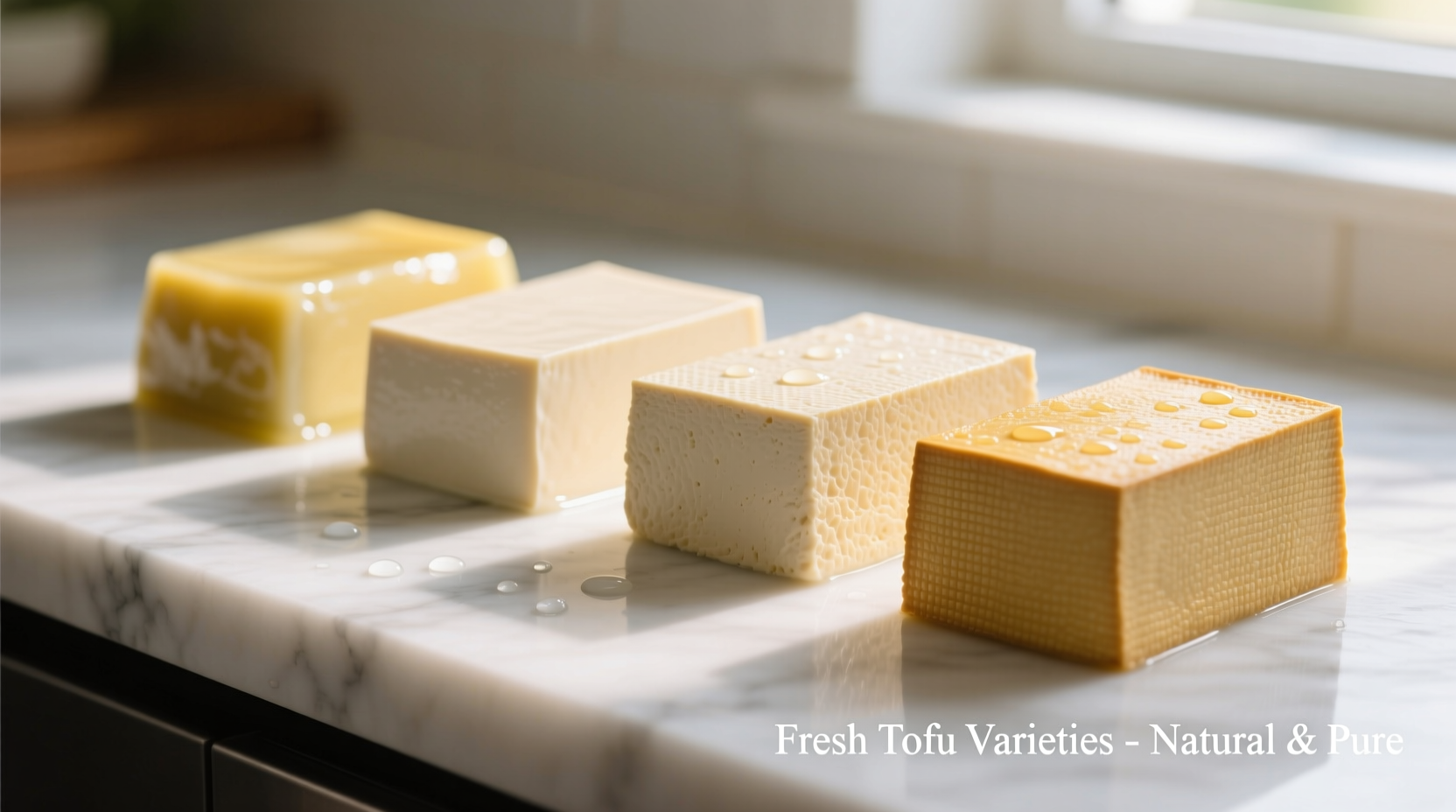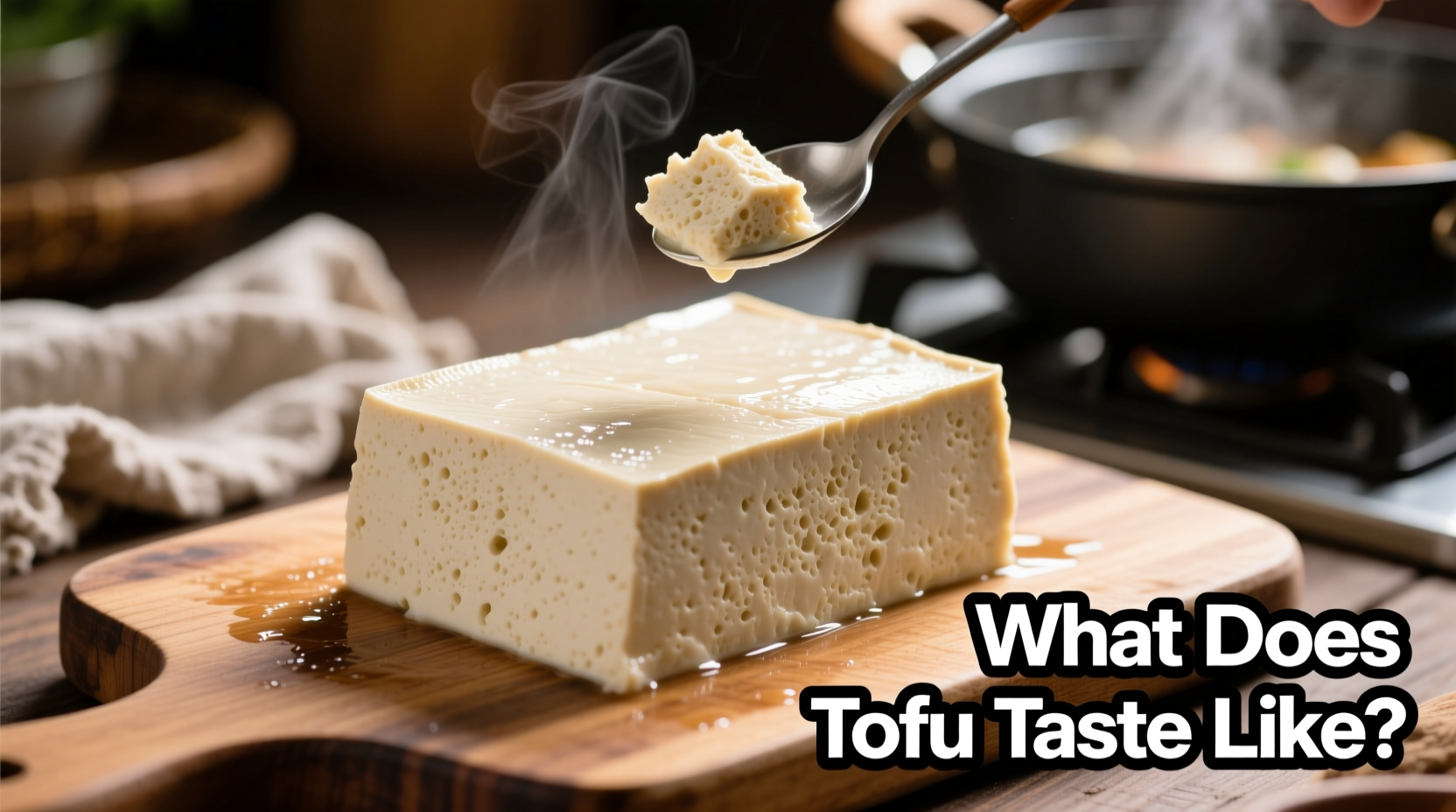Curious about tofu's flavor profile but unsure where to start? You're not alone. Many first-time tofu explorers wonder what does tofu taste like when prepared properly, especially after encountering poorly prepared versions that reinforce common misconceptions. This guide cuts through the confusion with science-backed insights and culinary expertise to help you understand tofu's true flavor potential.
The Essential Flavor Profile of Fresh Tofu
At its core, properly made tofu offers a clean, neutral canvas—not bland, but subtly nuanced. When you bite into fresh, high-quality tofu:
- Initial impression: A mild, slightly sweet nuttiness reminiscent of fresh soybeans
- Mouthfeel: Creamy yet firm texture that varies by type (more on this below)
- Aftertaste: Clean finish without lingering bitterness when properly processed
Contrary to popular belief, tofu doesn't taste like nothing—it has its own delicate flavor that serves as the perfect foundation for culinary creativity. The misconception that what does tofu taste like equates to "bland" often stems from improperly prepared or low-quality products.
How Tofu Varieties Differ in Taste and Texture
The question what does tofu taste like depends significantly on which variety you're experiencing. Each type serves different culinary purposes and offers distinct sensory experiences:
| Tofu Type | Flavor Characteristics | Texture Profile | Best Culinary Uses |
|---|---|---|---|
| Silken | Mildest flavor, almost imperceptible bean notes | Smooth, custard-like, delicate | Smoothies, desserts, dressings, dips |
| Soft | Slightly more pronounced soy flavor | Tender but holds shape when handled carefully | Steamed dishes, soups, miso soup |
| Firm | Noticeable nutty notes, clean finish | Holds shape well, slightly springy | Stir-fries, scrambles, grilling |
| Extra-Firm | Most distinct soybean flavor when raw | Dense, meaty texture, minimal moisture | Frying, baking, kebabs, meat substitutes |
This comparison reveals why someone asking what does tofu taste like in stir-fry might describe it completely differently than someone experiencing it in a dessert. The variety matters as much as the preparation method.

How Preparation Transforms Tofu's Flavor
Understanding what does tofu taste like when cooked requires examining how preparation methods dramatically alter its sensory profile. Unlike most ingredients, tofu's neutral base makes it uniquely responsive to culinary techniques:
Marinating Science: Why Tofu Absorbs Flavors
Tofu's porous structure allows it to absorb marinades more effectively than many believe. Research from the USDA Agricultural Research Service confirms that pressing tofu to remove excess water creates more space for flavorful liquids to penetrate. For optimal results:
- Press firm or extra-firm tofu for 15-30 minutes before marinating
- Use acidic components (vinegar, citrus) to help flavors penetrate deeper
- Marinate for at least 30 minutes (overnight yields dramatic results)
This explains why properly prepared tofu in dishes like mapo tofu or teriyaki stir-fry carries such pronounced flavors—it's not masking tofu's taste but transforming it completely.
Cooking Methods and Flavor Development
The question how does tofu taste when fried versus baked reveals significant differences:
- Frying: Creates Maillard reaction on surface, developing rich umami notes while keeping interior tender
- Baking: Concentrates flavors gradually, yielding chewier texture with deeper nuttiness
- Steaming: Preserves delicate flavor while enhancing natural sweetness
- Freezing: Changes texture dramatically, creating sponge-like consistency that absorbs sauces exceptionally well
Cultural Context: How Tofu Tastes Around the World
When exploring what does tofu taste like in different cuisines, regional preparation methods create entirely distinct flavor experiences. This context boundary reveals tofu's remarkable adaptability:
- Japanese cuisine: Often served chilled with delicate seasonings like soy-dashi broth, highlighting tofu's subtle sweetness
- Chinese cuisine: Frequently paired with bold flavors like fermented black beans or Sichuan peppercorns that complement rather than overwhelm
- Korean cuisine: Commonly pan-fried and served with spicy gochujang-based dipping sauces
- Peruvian adaptation: Incorporated into ceviche with citrus marinades that transform its texture and flavor profile
According to culinary anthropologists at Smithsonian Magazine, these regional variations demonstrate how tofu's neutral base has allowed it to integrate seamlessly into diverse culinary traditions worldwide—answering the question what does tofu taste like differently across cultures.
Debunking Common Tofu Taste Myths
Let's address frequent misconceptions that distort understanding of what does tofu taste like:
Myth: "Tofu tastes like nothing"
Reality: High-quality tofu has a distinct, delicate flavor that serves as a culinary foundation. The perception of blandness usually results from:
- Overly processed commercial varieties
- Insufficient seasoning or preparation
- Comparing to heavily flavored meat alternatives
Myth: "All tofu has a strong beany flavor"
Reality: Modern production methods have minimized undesirable bean notes. As noted by food scientists at Cornell University, proper blanching of soybeans before processing eliminates most beany flavors, leaving a clean, neutral base.
Myth: "You can't taste the difference between tofu varieties"
Reality: Trained palates easily distinguish between types. In blind taste tests conducted by the American Chemical Society, participants consistently identified texture and flavor differences between silken, soft, firm, and extra-firm varieties.
Practical Guidance for First-Time Tofu Experiences
If you're wondering what does tofu taste like for beginners, these evidence-based recommendations will ensure a positive first encounter:
- Start with high-quality brands: Look for products with minimal ingredients (soybeans, water, coagulant) and check expiration dates
- Try silken tofu in smoothies: Its neutral flavor disappears while adding creaminess and protein
- Sample aged tofu varieties: Fermented options like stinky tofu showcase tofu's flavor evolution (an acquired taste worth exploring)
- Experiment with freezing: Frozen-then-thawed tofu develops a chewier texture that better mimics meat in savory dishes
Professional chefs consistently recommend beginning with simple preparations that highlight rather than mask tofu's natural qualities. As you gain experience, you'll develop your own understanding of what does tofu taste like in your preferred preparations.
Conclusion: Tofu's Flavor Potential
Understanding what does tofu taste like requires recognizing it as a dynamic ingredient rather than a static product. Its flavor profile transforms based on variety, preparation, and culinary context—making it one of the most versatile ingredients in global cuisine. When properly selected and prepared, tofu offers a satisfying eating experience that has sustained populations for centuries.











 浙公网安备
33010002000092号
浙公网安备
33010002000092号 浙B2-20120091-4
浙B2-20120091-4